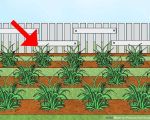Lawn Care for Beginners: Step-by-Step Guide
If you're new to lawn care, it can seem overwhelming at first. Whether you’ve just moved into a new home, or you simply want to improve the condition of your lawn, understanding the basics of lawn maintenance is key. In this step-by-step guide, we'll walk you through the essential tasks to ensure your lawn stays lush, green, and healthy all year round.
1. Understanding Your Lawn
The first step in effective lawn care is understanding the type of grass you have. Different types of grass thrive in different climates, and each requires a unique care routine. For example, cool-season grasses like Kentucky bluegrass and fescue grow best in cooler temperatures, while warm-season grasses like Bermuda and Zoysia thrive in warmer climates.
It’s also essential to assess the soil in your yard. Healthy soil is the foundation for a thriving lawn. You can conduct a soil test to check for pH levels, nutrient deficiencies, and drainage issues. This information will guide you in selecting the right fertilizers and adjusting the soil to support grass growth.
2. Mowing Tips for Beginners
Mowing is one of the most basic and essential tasks for maintaining your lawn, but it’s easy to make mistakes that can damage your grass. Here's how to mow like a pro:
- Keep your mower blades sharp: Dull blades can tear the grass, leaving it vulnerable to diseases. Regularly sharpen your mower blades for a clean, healthy cut.
- Adjust the cutting height: Never mow more than one-third of the grass blade at a time. Cutting too short can stress your lawn, making it more susceptible to weeds and drought.
- Change mowing patterns: To prevent soil compaction and ensure even growth, alternate your mowing direction each time you mow.
- Leave grass clippings: Grass clippings are a natural fertilizer that can return nutrients to your lawn. However, if the clippings are too long, you may want to mulch them or compost them.
3. Watering Your Lawn
Watering is another crucial aspect of lawn care. But how much water does your lawn really need? The general rule is to water deeply and less frequently. Here are some key watering tips:
- Water early in the morning: Watering early allows the grass to dry off by midday, preventing fungal diseases.
- Water deeply: Aim to water the lawn for about 20-30 minutes, ensuring that the water penetrates at least 6-8 inches deep into the soil. Shallow watering encourages shallow root growth, which can make your lawn more susceptible to heat stress.
- Avoid watering at night: Watering at night can leave the lawn wet for extended periods, creating an environment conducive to fungal diseases.
- Check soil moisture: Before watering, use a soil moisture sensor or dig a small hole to check the moisture level at the roots. If the soil is moist 2-3 inches down, you don't need to water.
4. Fertilizing Your Lawn
Fertilizing is essential for replenishing the nutrients that your grass consumes. Here’s how to fertilize effectively:
- Choose the right fertilizer: Fertilizers come in many types, but you should select one based on your lawn's needs. Look for fertilizers with a balanced NPK (nitrogen, phosphorus, and potassium) ratio. Cool-season grasses tend to require more nitrogen, while warm-season grasses benefit from higher potassium levels.
- Timing matters: Fertilize your lawn in the early spring when the grass starts to grow, and again in late fall before the grass goes dormant. Avoid fertilizing during hot summer months when the grass is stressed.
- Don’t over-fertilize: Too much fertilizer can burn the grass and lead to excess thatch. Follow the directions on the fertilizer package and apply only the recommended amount.
5. Controlling Weeds and Pests
A healthy lawn is less prone to weeds and pests, but occasionally you’ll need to take extra steps to control these nuisances. Here’s how:
- Weed control: Regularly pull weeds by hand, or use pre-emergent herbicides in the spring to prevent weeds from germinating. If weeds have already sprouted, spot treat them with post-emergent herbicides.
- Pest control: Pests like grubs and chinch bugs can damage your lawn. If you notice signs of pest damage, apply an insecticide or natural pest control solution to target the specific pest.
- Encourage healthy grass: A thick, healthy lawn is the best defense against weeds and pests. Regular mowing, watering, and fertilizing will help your lawn outcompete weeds and discourage pests.
6. When to Seek Professional Help
While basic lawn care tasks like mowing and watering can be done by most homeowners, sometimes it's best to seek professional help. If you're facing persistent issues with weeds, pests, or poor soil quality, a lawn care expert can provide targeted treatments and advice to get your lawn back on track.
Professional lawn care services can also help you with seasonal tasks like aeration, overseeding, and dethatching. If you’re too busy or don’t want to deal with the hard work, hiring a professional lawn care service might be the best choice.
If you're looking for reliable and affordable lawn care services, consider visiting our website, Lawn Care Services, for the best offers on products and services that suit your lawn's needs.
SEO Title: Lawn Care for Beginners: Step-by-Step Guide SEO Keywords: lawn care for beginners, lawn maintenance tips, how to care for your lawn, lawn fertilization, weed control, pest control SEO Description: Learn the essential steps for lawn care, including mowing, watering, fertilizing, and controlling weeds and pests. This step-by-step guide will help you create a lush and healthy lawn.







